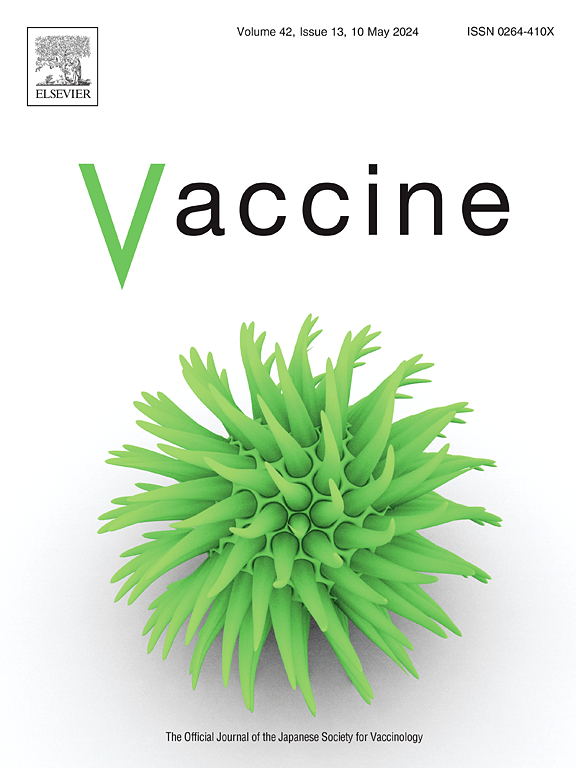流感免疫印记对小鼠后续接种免疫反应的影响。
IF 4.5
3区 医学
Q2 IMMUNOLOGY
引用次数: 0
摘要
个体初次接触流感时留下的免疫记忆印记(流感印记)对宿主对随后流感感染和疫苗接种的反应具有持久影响。在这里,我们研究了不同的流感病毒印记如何影响Balb/c小鼠对亚基、灭活病毒和基于蛋白质的纳米颗粒疫苗的免疫反应。我们的研究结果表明,流感印记对亚单位血凝素(HA)或福尔马林灭活(FI)病毒疫苗免疫具有系统发育距离依赖作用。爱知(H3N2, 2组)HA (HA3)或fi -爱知疫苗在具有密切相关的Phili (H3N2)印迹的小鼠中引发显著的爱知特异性HAI抗体和平衡的HA3特异性Th1/Th2抗体免疫反应,从而产生对爱知的强大保护。相比之下,在PR8 (H1N1,第1组)印迹小鼠(PR8- 2ha3)中接种HA3疫苗诱导的th2倾向反应与在没有事先流感免疫印迹的小鼠(PBS-2HA3)中观察到的反应相当。然而,随后的异亚型感染和疫苗接种消除了这种对抗体亚型谱的影响。尽管如此,最初的病毒暴露建立了长期产生针对印迹菌株的HAI抗体反应的能力。此外,Phili印迹后接种HA3/NP纳米簇疫苗可保护小鼠免受爱知感染,并诱导交叉反应免疫增强。我们的研究强调了在设计和评估流感疫苗的有效性时考虑个人流感暴露史的重要性。本文章由计算机程序翻译,如有差异,请以英文原文为准。
Impact of influenza immune imprinting on immune responses to subsequent vaccinations in mice
The immune memory imprinted during an individual's initial influenza exposure (influenza imprinting) has long-lasting effects on the host's response to subsequent influenza infections and vaccinations. Here, we investigate how different influenza virus imprinting impacts the immune responses to subunit, inactivated virus, and protein-based nanoparticle vaccines in Balb/c mice. Our results indicated a phylogenetic distance-dependent effect of influenza imprinting on subunit hemagglutinin (HA) or formalin-inactivated (FI) virus vaccine immunizations. Aichi (H3N2, group 2) HA (HA3) or FI-Aichi vaccination in mice imprinted with closely related Phili (H3N2) triggered significant Aichi-specific HAI antibody and balanced HA3-specific Th1/Th2 antibody immune responses, resulting in robust protection against Aichi. In contrast, HA3 vaccination in PR8 (H1N1, group 1) imprinted mice (PR8-2HA3) induced Th2-leaning responses comparable to those observed in mice without prior influenza immune imprinting (PBS-2HA3). However, subsequent heterosubtypic infections and vaccinations eliminated such effects on antibody subtype profiles. Nonetheless, initial virus exposure established a long-lasting capacity to produce HAI antibody responses against the imprinting strains. Moreover, Phili imprinting followed by HA3/NP nanocluster vaccination protected mice from Aichi infections and induced enhanced cross-reactive immunity. Our study highlights the significance of considering an individual's influenza exposure history when designing and evaluating the effectiveness of influenza vaccines.
求助全文
通过发布文献求助,成功后即可免费获取论文全文。
去求助
来源期刊

Vaccine
医学-免疫学
CiteScore
8.70
自引率
5.50%
发文量
992
审稿时长
131 days
期刊介绍:
Vaccine is unique in publishing the highest quality science across all disciplines relevant to the field of vaccinology - all original article submissions across basic and clinical research, vaccine manufacturing, history, public policy, behavioral science and ethics, social sciences, safety, and many other related areas are welcomed. The submission categories as given in the Guide for Authors indicate where we receive the most papers. Papers outside these major areas are also welcome and authors are encouraged to contact us with specific questions.
 求助内容:
求助内容: 应助结果提醒方式:
应助结果提醒方式:


